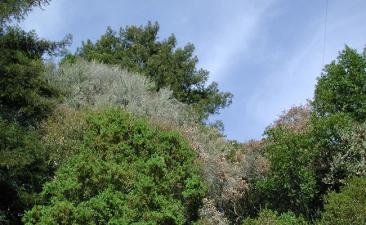Invasive Forest Pathogens

Preventing or reducing undesirable impacts of invasive forest diseases are a difficult challenge facing all land managers. Invasive forest diseases such as Sudden Oak Death, Laurel Wilt, White Pine Blister Rust, Chestnut Blight, Dutch Elm Disease, and Butternut Canker, continue to have serious impact on landscapes across the U.S. through changes in the structure, composition, and successional pathways of native forest communities.
Forest Health Protection provides technical assistance on forest health-related matters, including invasive forest insects, pathogens, and invasive plants working closely with land managers and resource staff with the National Forest System, the Department of the Interior, Department of Defense, other federal agencies, Tribes, all 50 States, U.S. Territories, universities, private landowners and other countries.
We provide survey and monitoring information, as well as technical and financial assistance to prevent, suppress, and control outbreaks threatening forest resources. Through these efforts we seek to maintain, enhance, and restore healthy forest conditions and look for links between changing atmospheric and pest conditions. Forest Health Protection provides specialized assistance to incorporate disturbance considerations in forest planning and management.
Spotlights

Sudden Oak Death


